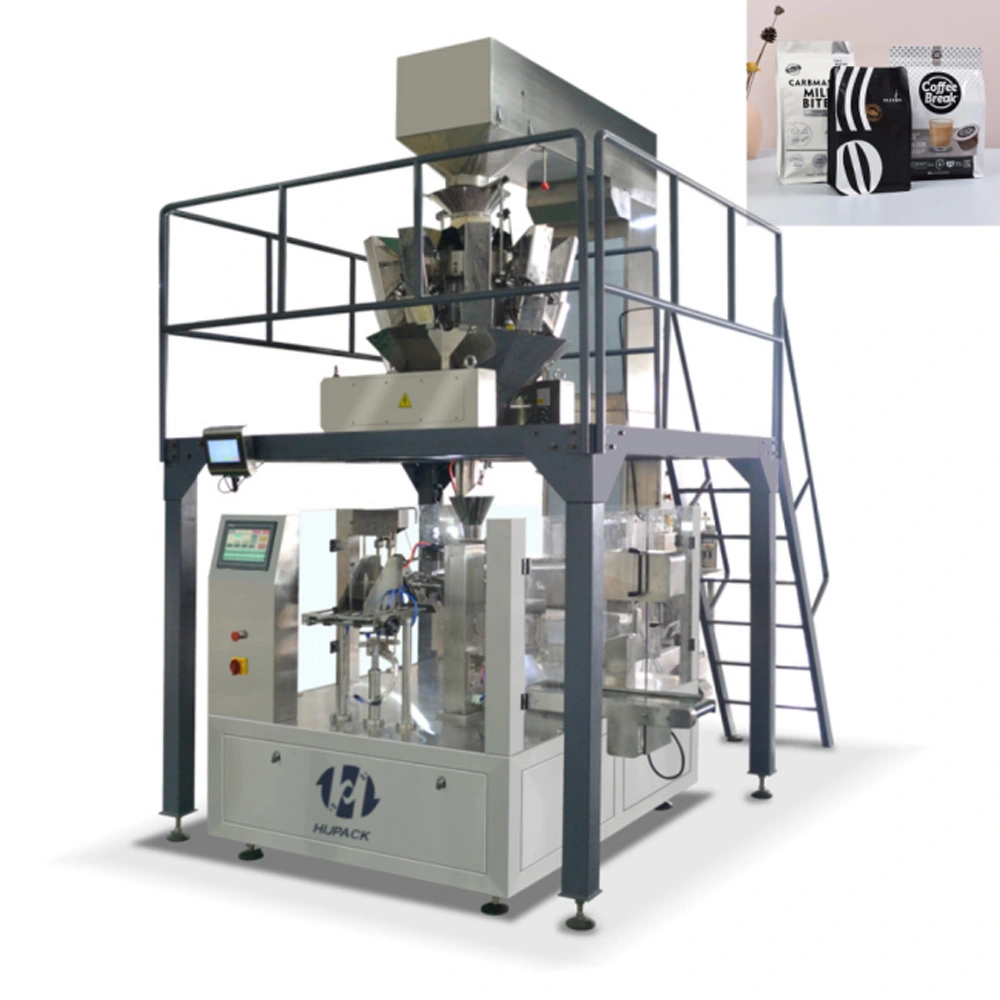Liquid pouch filling and sealing machines are pivotal in the food and beverage industry, enabling the efficient packaging of products like milk, sauces, and soups into convenient stand-up pouches. These machines, often integrated with food packaging machines, fill premade pouches with liquid products and seal them to ensure freshness and shelf stability. The rotary layout, a popular design, optimizes floor space and simplifies operation, making it ideal for high-speed production. By automating the process, these machines, akin to vertical form fill seal machines, meet consumer demand for portable, spouted pouches while enhancing manufacturer efficiency.
The process involves multiple stations, typically 6–10, where pouches are loaded, filled, sealed, and discharged. This article explores the step-by-step operation of rotary pouch packing machines, highlighting their role in modern packaging lines.

The process begins with premade pouches loaded into a bag magazine, either manually or via automated systems like robotic infeeds introduced by 2018. A bag feeding roller or robotic arm with vacuum suction transfers pouches to the machine’s grippers. Food packing machines with robotic infeeds reduce labor, increasing throughput for products like liquid coffee concentrates.
Proximity sensors detect pouches, which are then grasped by vacuum suction pads and secured by grippers capable of supporting up to 10 kg. These grippers hold the pouch through each station, ensuring stability for liquid pouch filling machines. For spouted pouches, precise gripper design is critical to accommodate specific dimensions.
At this station, inkjet or thermal printers apply date codes, lot numbers, or branding, while embossing adds raised characters to the seal area. This step, supported by pouch filling machines, ensures traceability and compliance with labeling requirements.
Vacuum suction pads gently open the pouch, with a blast of clean air ensuring full expansion. For zippered pouches, opening jaws assist in accessing the interior. Sensors detect misaligned or missing pouches, preventing filling to avoid spills, a feature common in food packaging equipment for liquid applications.
A liquid piston filler pumps a precise dose of product, from thin liquids like water to viscous sauces with particulates, into the pouch. For mixed products like soups, a settler vibrates the pouch to settle solids. Vertical pouch filling machines ensure accurate dosing, critical for maintaining product consistency.
High-volume or dual-component products, such as MREs, may require a second filling station for additional liquid or solid dispensing, enhancing flexibility in liquid pouch packing machines.
Deflators remove excess air to optimize package size, followed by heat seal bars closing the pouch’s top to form a seam. Ultrasonic sealing, an alternative, uses vibrations for stronger seals in sensitive applications. This step, integral to food packaging machines, ensures product integrity.
A second heat sealing station reinforces the seam, ensuring a robust closure. Ultrasonic sealing typically requires only one station. Pouch sealing machines prioritize seal strength to prevent leaks during transport.
A cooling bar flattens and strengthens the seam, optionally adding serrations for easy opening. The finished pouch is discharged onto a conveyor for downstream processes like case packing, completing the cycle for liquid pouch filling and sealing machines.
Liquid pouch filling machines offer speeds of 30–60 pouches per minute, reducing labor costs and increasing output. They support diverse products, from beverages to condiments, and accommodate spouted pouches for consumer convenience. The compact rotary design saves space, ideal for small facilities. Integration with food packaging equipment ensures compliance with hygiene standards, critical for food safety.
HIJPACK Machine, a leading vertical form fill seal machine manufacturer, excels in liquid pouch packaging with advanced food packaging machines. Their liquid pouch filling machines support speeds up to 60 pouches per minute, handling premade pouches and sustainable films. Featuring robotic infeeds and IoT integration, HIJPACK’s pouch packing machines ensure precision and efficiency for products like coffee syrups and sauces. With competitive pricing and robust packaging machine troubleshooting, HIJPACK empowers manufacturers to meet consumer demand, reinforcing its leadership in the food packaging industry.